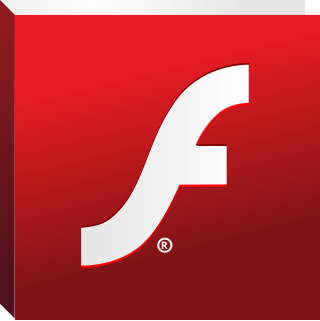
Adobe Inc., originally called Adobe Systems Incorporated, is an American multinational computer software company incorporated in Delaware and headquartered in San Jose, California. It has historically specialized in software for the creation and publication of a wide range of content, including graphics, photography, illustration, animation, multimedia/video, motion pictures, and print. Its flagship products include Adobe Photoshop image editing software; Adobe Illustrator vector-based illustration software; Adobe Acrobat Reader and the Portable Document Format (PDF); and a host of tools primarily for audio-visual content creation, editing and publishing. Adobe offered a bundled solution of its products named Adobe Creative Suite, which evolved into a subscription software as a service (SaaS) offering named Adobe Creative Cloud. The company also expanded into digital marketing software and in 2021 was considered one of the top global leaders in Customer Experience Management (CXM).

Adobe Flash is a multimedia software platform used for production of animations, rich web applications, desktop applications, mobile apps, mobile games, and embedded web browser video players. Flash displays text, vector graphics, and raster graphics to provide animations, video games, and applications. It allows streaming of audio and video, and can capture mouse, keyboard, microphone, and camera input.

Macromedia, Inc., was an American graphics, multimedia, and web development software company (1992–2005) headquartered in San Francisco, California, that made products such as Flash and Dreamweaver. It was purchased by its rival Adobe Systems on December 3, 2005.
A web container is the component of a web server that interacts with Jakarta Servlets. A web container is responsible for managing the lifecycle of servlets, mapping a URL to a particular servlet and ensuring that the URL requester has the correct access-rights. A web container handles requests to servlets, Jakarta Server Pages (JSP) files, and other types of files that include server-side code. The Web container creates servlet instances, loads and unloads servlets, creates and manages request and response objects, and performs other servlet-management tasks. A web container implements the web component contract of the Jakarta EE architecture. This architecture specifies a runtime environment for additional web components, including security, concurrency, lifecycle management, transaction, deployment, and other services.

Adobe Dreamweaver is a proprietary web development tool from Adobe Inc. It was created by Macromedia in 1997 and developed by them until Macromedia was acquired by Adobe Systems in 2005.

Adobe ColdFusion is a commercial rapid web-application development computing platform created by J. J. Allaire in 1995. ColdFusion was originally designed to make it easier to connect simple HTML pages to a database. By version 2 (1996), it became a full platform that included an IDE in addition to a full scripting language.

HomeSite was an HTML editor originally developed by Nick Bradbury. Unlike WYSIWYG HTML editors such as FrontPage and Dreamweaver, HomeSite was designed for direct editing, or "hand coding", of HTML and other website languages.
ColdFusion Markup Language, more commonly known as CFML, is a scripting language for web development that runs on the JVM, the .NET framework, and Google App Engine. Multiple commercial and open source implementations of CFML engines are available, including Adobe ColdFusion, Lucee, New Atlanta BlueDragon, Railo, and Open BlueDragon as well as other CFML server engines.
BlueDragon is a ColdFusion Markup Language (CFML) engine comparable to Adobe Systems's ColdFusion. It is licensed and distributed by New Atlanta from TagServlet Ltd based in Scotland. BlueDragon is also distributed and supported by BEA Systems on their Oracle WebLogic Server server platform.
A rich web application is a web application that has many of the characteristics of desktop application software. The concept is closely related to a single-page application, and may allow the user interactive features such as drag and drop, background menu, WYSIWYG editing, etc. The concept was first introduced in 2002 by Macromedia to describe Macromedia Flash MX product. Throughout the 2000-s, the term was generalized to describe web applications developed with other competing browser plugin technologies including Java applets, Microsoft Silverlight.

Apache Flex, formerly Adobe Flex, is a software development kit (SDK) for the development and deployment of cross-platform rich web applications based on the Adobe Flash platform. Initially developed by Macromedia and then acquired by Adobe Systems, Adobe donated Flex to the Apache Software Foundation in 2011 and it was promoted to a top-level project in December 2012.
Adobe Flash Player is computer software for viewing multimedia contents, executing rich Internet applications, and streaming audio and video content created on the Adobe Flash platform. It can run from a web browser as a browser plug-in or independently on supported devices. Originally created by FutureWave under the name FutureSplash Player, it was renamed to Macromedia Flash Player after Macromedia acquired FutureWave in 1996. It was then developed and distributed by Adobe Systems as Flash Player after Adobe acquired Macromedia in 2005. It is currently developed and distributed by Zhongcheng for users in China, and by Harman International for enterprise users outside of China, in collaboration with Adobe.

Adobe Flash Lite was a lightweight version of Adobe Flash Player, a software application published by Adobe Systems for viewing Flash content. Flash Lite operates on devices that Flash Player cannot, such as mobile phones and other portable electronic devices like Wii, Chumby and Iriver.

TopStyle was a CSS/XHTML/HTML editor for Microsoft Windows developed by Nick Bradbury and now maintained by Stefan van As. The editor was code-centric rather than WYSIWYG, with integrated support for previews using either the Mozilla Gecko, Internet Explorer Trident, or Apple Inc. Webkit layout engines. The software was available as a commercial version with a trial period.

Ben Forta is Adobe Systems Inc's Senior Director of Education Initiatives. His primary responsibility is a focus on students, both K-12 and higher-ed, with an eye towards digital and visual literacy, and the role that Adobe services and tools play in the future of communication and storytelling. He is the author of over 40 technical books on SQL, Regular Expressions, ColdFusion, Windows development, JSP, and more. Many of his books have been translated into over fifteen languages worldwide. Before working for Allaire and Macromedia, he founded the website Car.com, which was later purchased by Auto-By-Tel. Born in London, England, Forta lives in Oak Park, Michigan with his wife and their children.
Allaire Corporation was a computer software company founded by Jeremy and JJ Allaire in Minnesota, later headquartered in Cambridge, then Newton, Massachusetts. It commenced operations in May 1995, had its initial public offering on NASDAQ in January 1999, and was acquired by rival Macromedia in early 2001.

Adobe Flash Builder is an integrated development environment (IDE) built on the Eclipse platform that speeds development of rich Internet applications (RIAs) and cross-platform desktop applications, particularly for the Adobe AIR platform. Adobe Flash Builder 4 is available in two editions: Standard and Premium.

Adobe FreeHand was a computer application for creating two-dimensional vector graphics oriented primarily to professional illustration, desktop publishing and content creation for the Web. FreeHand was similar in scope, intended market, and functionality to Adobe Illustrator, CorelDRAW and Xara Designer Pro. Because of FreeHand's dedicated page layout and text control features, it also compares to Adobe InDesign and QuarkXPress. Professions using FreeHand include graphic design, illustration, cartography, fashion and textile design, product design, architects, scientific research, and multimedia production.
Jeff Tapper is a technologist and theatrical lighting designer based in New York City. He is currently a senior vice president of engineering at Viacom. He was formerly a partner at Digital Primates, a software design company. He has written and contributed to many books and speaks frequently at international conferences about internet technologies, including ColdFusion, Adobe Flash, Adobe Flex, MPEG-DASH, streaming video and software engineering best practices.








